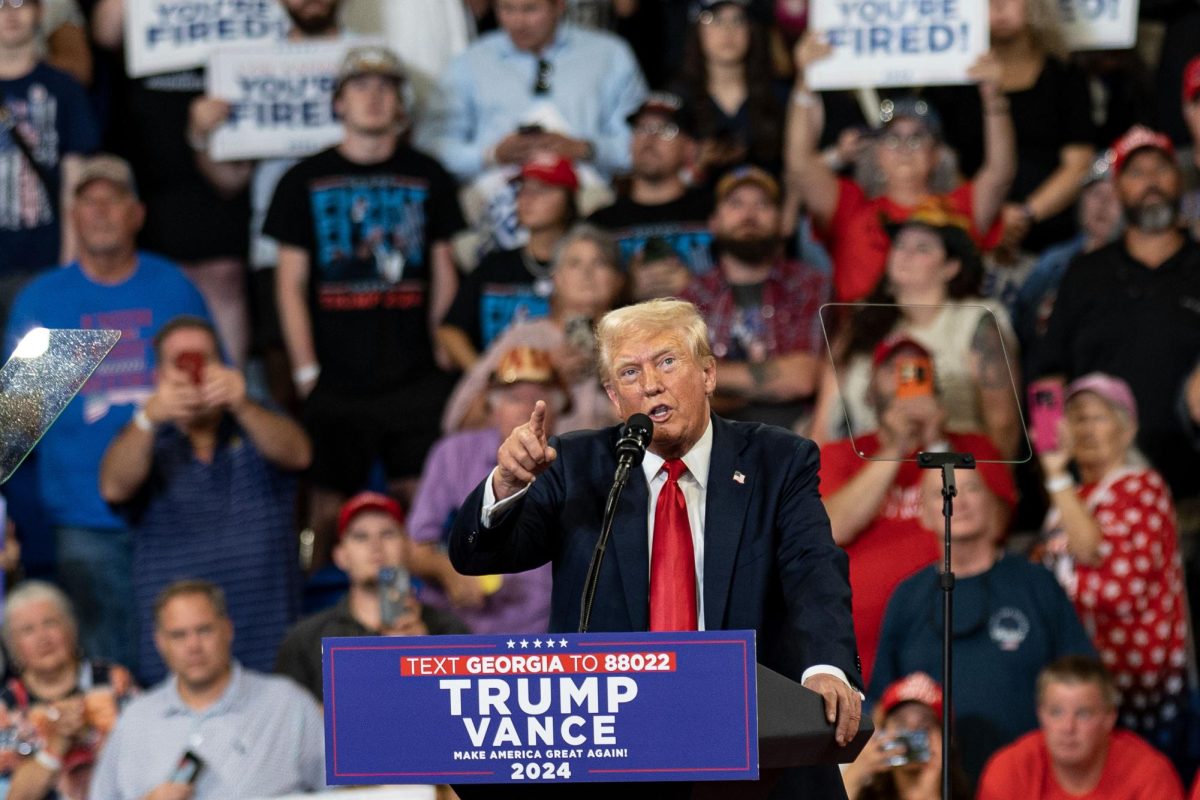In the early hours of the morning on Wednesday, November 8th, 2024, MSNBC, the Associated Press, Fox News and other members of the fourth estate called the 2024 American presidential election for Donald Trump.
A second Trump presidency will impact the lives of millions of Americans in many different ways, with many of the policy initiatives Trump has wished to implement threatening to upend the American social and economic order.
This article will focus on dissecting his proposed tariff plan and will conclude that it would be disastrous for the American economy if implemented.
I am an Economics major and a member of the International Honor Society in Economics so yes, I know what I’m talking about.
For those who are unaware, a tariff is a tax that the government of one country levels on the importation of goods of another country. Tariffs can be leveled for a host of reasons, but two usually given are economic protection of domestic industries or retaliation for bad behavior. For example, the U.S. government could levy a 200% tariff on French wine. They could do this because French wine is outcompeting U.S. wine in the domestic market and threatening the welfare of U.S. wineries. Or maybe France levied its own tariff on American timber exports or voted against the U.S. in a U.N. Security Counsel matter.
As part of his “America First” agenda, the President-elect wants to revitalize American consumer goods production and make them more competitive in the domestic market, in addition to punishing other countries which he believes are threatening American interests.
On the campaign trail, Trump has floated a much more aggressive tariff policy than he implemented during his previous administration. An article by Greg Iacurci of CNBC cites Trump as proposing a 10-20% tariff on all imported goods, a 60% tariff on all imports from China, and as much as a 200% tariff on vehicle imports from Mexico.
Why is this bad? It would make nearly every consumer good Americans like to buy much more expensive.
When a tariff is leveled on a good, it is the importing firm that pays it to the U.S. government upon the good’s importation, not the exporting country like many Trump supporters ignorantly claim. Having to pay higher tariffs raises the firm’s cost of production, and firms almost always pass those increased costs onto the consumer, meaning the American people will bear the economic brunt of the tariffs. Furthermore, there would be an immediate drop in imported goods supplied to the market, since firms will not have the revenue stream to purchase the same levels of inventory as they did prior to tariff implementation. The CNBC article projects that the tariffs would be equivalent to a $3,000 per year tax on the average American household, a 3% reduction of after-tax income.
There is some speculation that the Trump Administration could pass the revenue from the tariffs (a projected $4.5 trillion sum over the next decade) onto American households via some form of tax cut (likely an extension of the first Trump-era tax cut), but that would only blunt the $3,000 per-year loss per household down to $2,600. Additionally, whatever boost the U.S. dollar may see from the tariff proposal would likely be temporary, as other countries would likely levy retaliatory tariffs on American exports.
American manufacturing as it stands today would be unable to make up for the sharp drop in supply of imported goods. We outsource the production of most consumer goods to manufacturing giants like China, Vietnam or Bangladesh because American labour is just too expensive. American labourers are comparably highly educated, have a high skill-floor, and have a much higher standard of living. Convincing American labour to move back to low-skilled factory jobs would be a very arduous and costly endeavor, if even possible at all.
This is where we see Trump’s anti-immigration agenda bleed into his economic agenda. Trump’s plan to deport naturalized citizens and illegal immigrants alike would likely result in further shrinkage of the blue-collar workforce.
America’s industrial base is also lacking from an infrastructure perspective, and it would be astronomically expensive to build enough manufacturing facilities to make up for the jobs Trump wants to “reclaim” from overseas or down south.
In short, the convergence of these factors would result in a sharp reduction of consumer goods supplied to the American market, with the smaller quantity that do find their way to shelves being considerably more expensive.
The Tax Foundation projects that if Trump’s tariff proposal were to be fully implemented as advertised, it would result in a near-immediate loss of over 684,000 jobs and a reduction of U.S. GDP by over 0.8%.
This would not be the first time America has flirted with a broad tariff levy to improve the economy. In 1930, President Herbert Hoover and republicans in Congress passed the Smoot-Hawley Tariff Act, increasing import tariffs by 20%. Instead of resurrecting the U.S. manufacturing base that had been crippled by the Great Depression, it resulted in the decline of global trade by an eye-watering 66% and plunged the U.S. economy further into recession.
The U.S. Senate claims the Smoot-Hawley Act is “among the most catastrophic acts in congressional history.”
While Trump claims his tariff plan would revitalize the U.S. economy, economic reasoning and American history proves him wrong.






